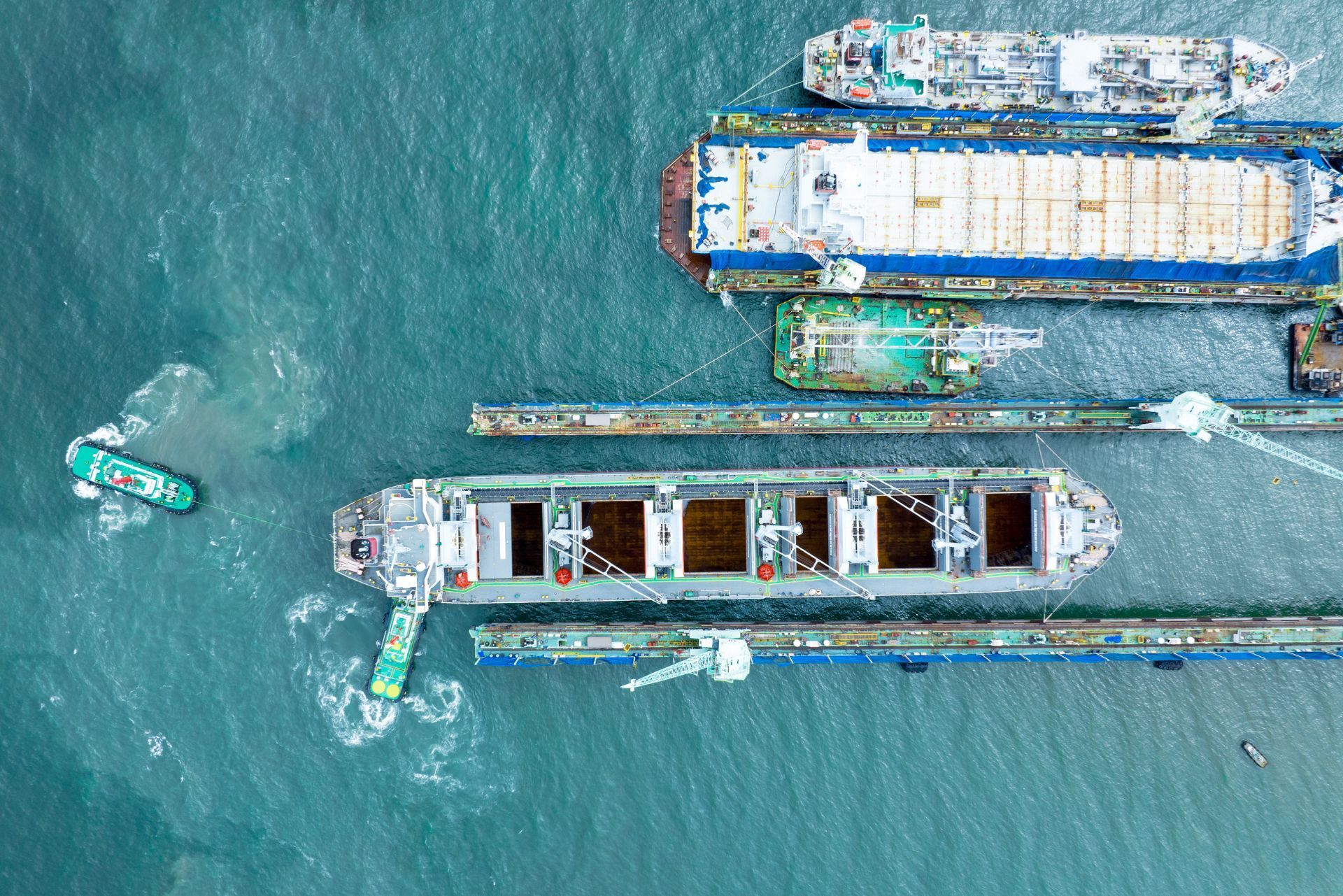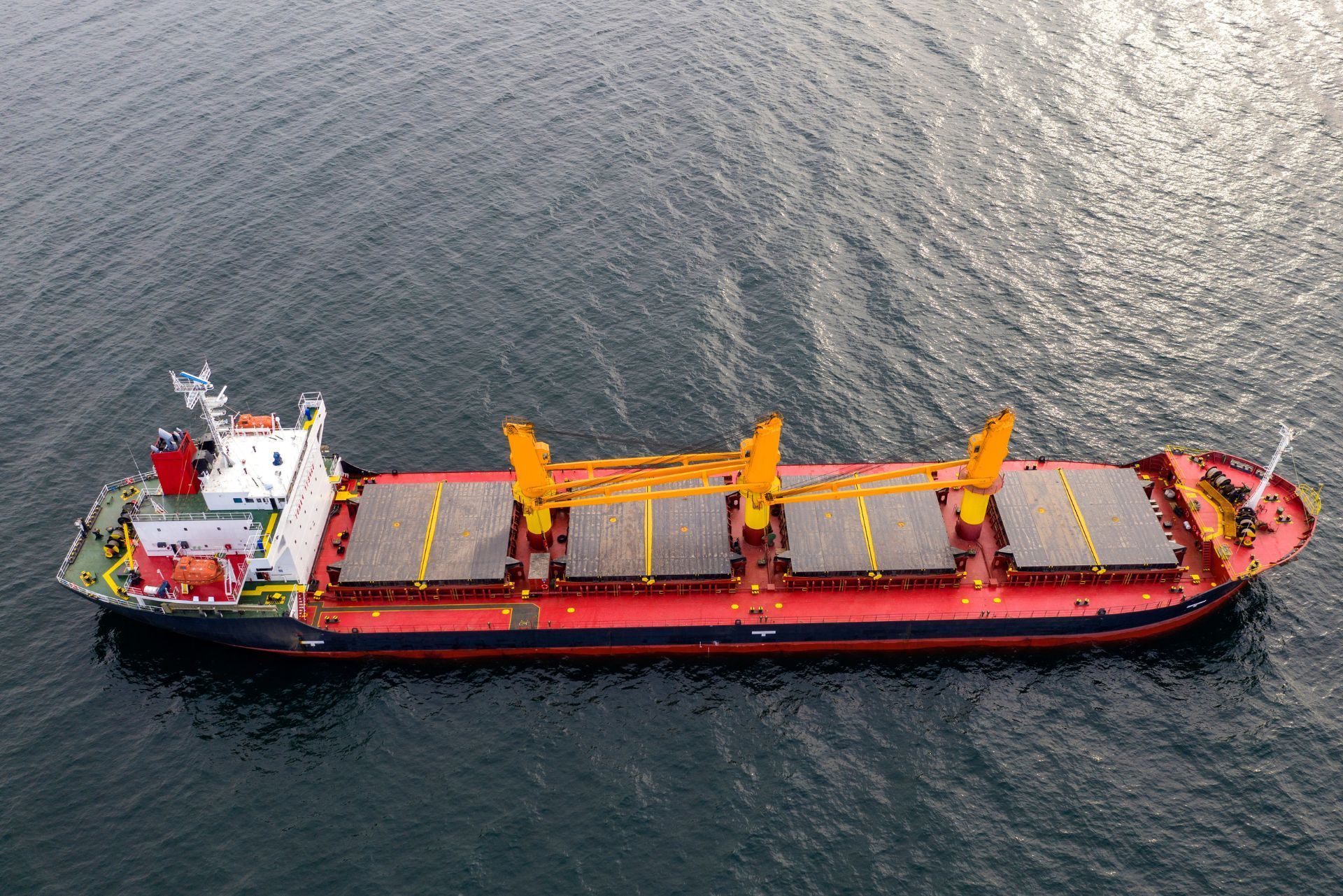Top 3 Recommended Policies

Marine transport is a vital component of global trade, with approximately 80% of the world’s trade by volume carried by sea. This immense scale of maritime activity naturally brings with it a variety of risks—from cargo damage and vessel accidents to geopolitical tensions and environmental hazards. For businesses operating in this sector, marine transport business insurance is not just a safety net but a strategic necessity to safeguard assets, ensure compliance, and maintain operational continuity.
In this comprehensive guide, we’ll explore the essentials of marine transport insurance, the current market landscape, emerging trends, and practical insights to help businesses navigate this complex but crucial area. Whether you’re a shipowner, cargo operator, or logistics provider, understanding marine insurance can make a significant difference in managing risks effectively.
To begin, it’s worth noting that the global marine insurance market was valued at $38.9 billion in 2023, marking a 5.9% increase from the previous year, reflecting growing demand and evolving risk profiles within the industry. For more detailed market insights, refer to the International Union of Marine Insurance (IUMI).
Understanding Marine Transport Business Insurance
What Is Marine Insurance?
Marine insurance is a specialized form of coverage designed to protect ships, cargo, terminals, and any transport or property involved in maritime activities. It covers a wide range of risks, including physical damage to vessels, loss or damage to cargo, liability claims arising from collisions or environmental damage, and even war-related risks in certain cases.
This insurance is essential because the marine environment is inherently unpredictable. Weather conditions, piracy, geopolitical conflicts, and mechanical failures can all lead to significant financial losses. Marine insurance helps businesses mitigate these risks by providing financial compensation and legal protection. The complexity of maritime operations necessitates a robust insurance framework, as even minor incidents can escalate into major liabilities, affecting not just the immediate stakeholders but also the broader supply chain.
Types of Marine Insurance Policies
The marine insurance landscape includes several key types of policies tailored to different aspects of maritime operations:
- Hull Insurance: Covers physical damage to the ship itself, including machinery and equipment.
- Cargo Insurance: Protects the goods being transported against loss or damage during transit.
- Liability Insurance: Covers legal liabilities arising from accidents, pollution, or injury to third parties.
- War Risk Insurance: Provides coverage against risks related to war, piracy, and other hostile acts.
Recently, new products like Red Sea cargo war insurance have emerged, offering coverage up to $50 million per insured vessel to address heightened risks in specific maritime regions. This development was launched by Howden Insurance Brokers LLC in April 2024, highlighting the market’s responsiveness to evolving geopolitical challenges (The Business Research Company). Additionally, advancements in technology have led to the introduction of telematics and data analytics in marine insurance, enabling insurers to assess risks more accurately and tailor policies to the unique needs of each maritime operation. This shift not only enhances risk management but also promotes safer practices within the industry.
Moreover, the increasing focus on sustainability has prompted marine insurers to consider environmental risks more seriously. Policies are now being developed to cover liabilities related to oil spills and other forms of pollution, reflecting a growing awareness of the environmental impact of maritime activities. As regulations tighten globally, businesses are encouraged to adopt comprehensive insurance strategies that not only protect their assets but also align with environmental standards, thereby ensuring compliance and fostering a responsible maritime industry.

Current Trends and Market Dynamics
Market Growth and Profitability
The marine insurance market is experiencing steady growth, with projections indicating an increase from $32.2 billion in 2024 to $34.34 billion in 2025, at a compound annual growth rate (CAGR) of 6.6%. This growth is fueled by expanding global trade volumes and heightened awareness of maritime risks.
Insurers have been operating with above-average profitability for the past two to three years, according to Andrew D’Alessio, Head of Marine, Americas, at AXA XL. This profitability reflects improved risk management, better underwriting practices, and advances in maritime safety protocols (IUMI).
Moreover, the growth of e-commerce and digital trade has significantly influenced the marine insurance landscape. As more businesses rely on international shipping to meet consumer demands, insurers are adapting their products to cover a broader range of risks associated with cargo transport. This includes not only traditional hull and machinery coverage but also cyber risk insurance, which is becoming increasingly relevant as shipping operations become more digitized.
Additionally, the rise of environmental regulations is prompting insurers to consider sustainability factors in their underwriting processes. Companies that demonstrate commitment to reducing their carbon footprint and adhering to eco-friendly practices may find themselves benefiting from more favorable insurance terms, reflecting a shift towards a more responsible approach in the industry.
Improvements in Maritime Safety
One of the most encouraging trends in the marine transport sector is the significant reduction in shipping losses. Total shipping losses have decreased dramatically from over 200 vessels annually in the 1990s to a record low of 26 by the end of 2023. This improvement is largely due to enhanced safety regulations, better vessel design, and more rigorous crew training.
Such progress not only reduces the frequency and severity of insurance claims but also contributes to lower premiums and more stable market conditions. For more on maritime safety improvements, Allianz Commercial provides detailed insights (Allianz Commercial).
Furthermore, the integration of technology in maritime operations has played a pivotal role in enhancing safety measures. The adoption of advanced navigation systems, real-time monitoring, and predictive analytics allows for better decision-making and risk assessment. For instance, the implementation of Automatic Identification Systems (AIS) has improved vessel tracking and collision avoidance, significantly minimizing accidents at sea. As the industry continues to embrace innovations like the Internet of Things (IoT) and artificial intelligence (AI), the potential for further safety improvements remains vast.
In addition, the collaboration between shipping companies and insurance providers has become increasingly important. Joint initiatives aimed at sharing data and best practices are fostering a culture of safety that extends beyond individual organizations. This collaborative approach not only enhances overall maritime safety but also builds trust within the insurance market, encouraging more businesses to invest in comprehensive coverage for their maritime operations.
Key Challenges Facing Marine Transport Insurance
Geopolitical and Cargo Risks
Despite the positive trends, marine insurers face a "perfect storm" of geopolitical risks and cargo vulnerabilities. Political instability, trade disputes, and regional conflicts can disrupt shipping routes and increase the likelihood of losses. Cargo theft, damage, and delays remain persistent challenges that require tailored insurance solutions. The rise of piracy in certain regions, particularly off the coast of Somalia and in the Gulf of Guinea, has exacerbated these risks, leading to increased premiums and the need for specialized coverage.
Kevin Wolfe, Senior Vice President of ISC’s Marine Division, emphasizes the importance of collaboration among clients, brokers, and insurers to develop effective risk management strategies. He notes, "The best solution... is when you have a receptive client and broker and us as ISC Marine can all get together" to navigate these complexities (Insurance Business Magazine). Additionally, the impact of climate change cannot be overlooked; rising sea levels and extreme weather events are increasingly affecting shipping operations, leading to unpredictable delays and potential losses that insurers must account for in their risk assessments.
Regulatory and Technological Developments
The integration of Maritime Autonomous Surface Ships (MASS) into global maritime operations represents a significant technological shift. These autonomous vessels promise enhanced safety, operational efficiency, and cost savings. However, their adoption requires a robust regulatory framework and certification processes to address liability, cybersecurity, and operational risks. The challenge lies in ensuring that existing maritime laws can accommodate these innovations while still protecting the interests of all stakeholders involved.
Insurers will need to adapt policies and underwriting criteria to accommodate these emerging technologies, balancing innovation with risk mitigation. The research by Hany M. Arnaoot highlights these challenges and opportunities in the evolving maritime landscape (arXiv.org). Furthermore, the increasing reliance on data analytics and artificial intelligence in risk assessment and claims processing is reshaping the insurance landscape. Insurers are now tasked with harnessing these technologies not only to streamline operations but also to enhance their predictive capabilities, ultimately leading to more informed decision-making in underwriting and claims management.
Why Marine Transport Insurance Matters for Your Business
Protecting Assets and Ensuring Business Continuity
Marine transport businesses operate in a high-risk environment where losses can be catastrophic. Insurance coverage protects physical assets such as vessels and cargo, but it also shields businesses from financial liabilities arising from accidents or environmental damage. This protection is crucial for maintaining cash flow, meeting contractual obligations, and preserving reputation.
Moreover, having comprehensive marine insurance can be a prerequisite for securing contracts or financing. Many clients and financial institutions require proof of adequate insurance coverage before engaging in business, underscoring its importance in commercial operations. This requirement not only enhances the credibility of the business but also instills confidence in stakeholders, ensuring smoother transactions and fostering long-term partnerships.
In addition, the unpredictable nature of maritime operations, influenced by weather conditions, geopolitical tensions, and regulatory changes, amplifies the need for robust insurance. Businesses that are adequately insured can navigate these uncertainties with greater resilience, allowing them to focus on growth and expansion rather than potential setbacks.
Customizing Coverage to Fit Your Needs
Every marine transport business has unique risk exposures depending on factors like the type of cargo, shipping routes, vessel size, and operational practices. Working closely with knowledgeable brokers and insurers to tailor policies ensures that coverage aligns with specific needs, avoiding gaps or unnecessary costs.
Recent innovations like targeted war risk insurance for high-risk zones demonstrate how insurers are developing specialized products to meet evolving demands. Staying informed about these options can provide businesses with a competitive edge and peace of mind. Additionally, the rise of technology in the marine industry, such as tracking systems and predictive analytics, allows companies to assess risks more accurately and adjust their insurance needs accordingly. This proactive approach not only enhances safety but also optimizes insurance premiums, making it a win-win for businesses looking to thrive in a challenging environment.
Furthermore, as global trade continues to expand, the complexity of marine logistics increases, necessitating a more nuanced understanding of insurance policies. Companies must consider factors like international regulations, customs requirements, and the potential for supply chain disruptions. By engaging with experts who specialize in marine transport insurance, businesses can ensure they are not only compliant but also strategically positioned to mitigate risks associated with global operations. This level of preparedness can be a significant differentiator in a competitive marketplace, allowing businesses to respond swiftly to challenges while safeguarding their assets and interests.

Conclusion: Navigating the Future of Marine Transport Insurance
The marine transport insurance industry is evolving rapidly in response to global trade growth, technological innovation, and shifting risk landscapes. With the market valued at nearly $39 billion in 2023 and continuing to expand, businesses that invest in comprehensive, tailored insurance solutions will be better positioned to thrive.
Understanding the types of coverage available, staying abreast of market trends, and collaborating with experienced insurance partners are essential steps for managing the complex risks inherent in marine transport. As the industry embraces new technologies like autonomous ships and adapts to geopolitical challenges, marine insurance will remain a cornerstone of resilient and sustainable maritime operations.
For businesses looking to deepen their knowledge or explore specific insurance products, consulting recent industry reports and expert analyses can provide valuable guidance. The marine insurance sector’s ongoing transformation offers both challenges and opportunities, making informed decision-making more important than ever.
Contact Us
Phone
Location
9595 Six Pines Dr, Suite 8210, The Woodlands, TX 77380

